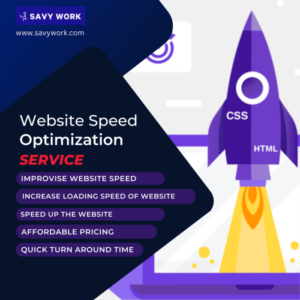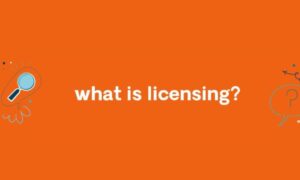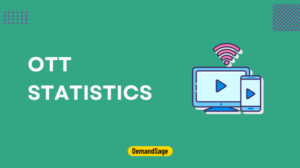
As Using hashtags effectively in 2025 takes center stage, this opening passage beckons readers into a world crafted with good knowledge, ensuring a reading experience that is both absorbing and distinctly original.
The evolution of hashtags has transformed how brands and individuals enhance their online presence. In 2025, the strategic use of hashtags is not just a trend but a necessity for engaging audiences and improving visibility across multiple platforms. With effective techniques for selecting relevant hashtags, analyzing performance metrics, and integrating them into search engine marketing, this guide will help you navigate the future of hashtags.
Effective Hashtag Strategies for 2025

In the dynamic landscape of social media, hashtags have evolved into powerful tools for engagement and visibility. Staying ahead in 2025 requires a nuanced understanding of how to select and leverage hashtags effectively to reach targeted audiences. Utilizing appropriate strategies can significantly enhance content discoverability and audience interaction, making it essential for brands and content creators to refine their hashtag approach.Choosing the right hashtags involves a combination of research, trend analysis, and an understanding of your audience’s preferences.
By analyzing competitors and industry trends, one can curate a list of relevant hashtags that resonate with your target demographic, enhancing content engagement.
Selecting Relevant Hashtags
Utilizing specific techniques can elevate the effectiveness of your hashtag strategy. Here are some methods to select relevant hashtags:
1. Audience Research
Understanding your audience’s interests and preferences allows you to choose hashtags that align with their online behavior.
2. Trending Topics
Monitor current events and popular discussions within your industry. Using trending hashtags can increase the chances of your content being seen.
3. Competitor Analysis
Examine which hashtags competitors are successfully using. This can provide insights into effective tags that your target audience engages with.
4. Niche Hashtags
Incorporate niche-specific hashtags to connect with a more targeted audience, even if these tags have lower search volume.
5. Use Hashtag Tools
Tools like Hashtagify and RiteTag can help identify popular hashtags and forecast their performance based on real-time data.Utilizing these techniques not only improves visibility but also engages your audience in a more meaningful way.
Trending Hashtags and Their Impact
Identifying trending hashtags relevant to your industry can have a significant impact on your content’s visibility. Here’s a look at some examples from various sectors:
Fashion
#SustainableFashion has gained traction as consumers increasingly prioritize eco-friendly brands. Posts using this hashtag often see increased engagement from eco-conscious consumers and influencers.
Technology
#AIRevolution highlights advancements in artificial intelligence. Content tagged with this hashtag reaches tech enthusiasts eager to learn about the latest innovations.
Health and Fitness
#HealthyLiving continues to trend as more people adopt wellness routines. This hashtag connects lifestyle brands with health-focused audiences, amplifying reach.The use of trending hashtags not only boosts visibility but also aligns your content with current conversations, making it more relevant and shareable.
Analyzing Hashtag Performance
To optimize your hashtag strategy, it’s crucial to analyze the performance of your chosen hashtags. Social media analytics tools provide valuable insights into how well your hashtags are performing. Consider these analysis methods:
Engagement Metrics
Monitor likes, shares, comments, and overall engagement on posts using specific hashtags. Higher engagement rates indicate successful hashtag usage.
Reach and Impressions
Track how many users have seen your posts through specific hashtags, which helps assess visibility.
Follower Growth
Assess any correlation between hashtag use and an increase in followers. This can indicate the effectiveness of your hashtags in attracting a new audience.
Content Performance
Compare the performance of posts with and without hashtags to determine the impact of your hashtag strategy.By employing these analysis techniques, you can refine your approach and maximize the effectiveness of your hashtag usage over time.
Integration of Hashtags in Search Engine Marketing
The integration of hashtags in search engine marketing (SEM) is becoming an increasingly vital strategy for brands looking to enhance their visibility and audience engagement. In 2025, leveraging hashtags within paid search campaigns can significantly improve the reach and effectiveness of marketing efforts. This approach not only helps in connecting with specific audiences but also plays a crucial role in distinguishing brands in a saturated digital landscape.Hashtags serve as powerful tools to enhance visibility in paid search campaigns by associating ads with trending topics and relevant discussions.
When users search for specific s or phrases, hashtags can help align ads with their interests, leading to higher click-through rates. Incorporating hashtags into ad copy or as part of a broader strategy allows advertisers to tap into ongoing conversations, making their ads more relevant and timely.
Enhancing Ad Targeting and Audience Segmentation
Utilizing hashtags can significantly improve ad targeting and audience segmentation. By identifying popular hashtags that resonate with target demographics, brands can tailor their messaging more effectively. This targeted approach not only ensures that ads reach the right audience but also enhances user engagement. For instance, a brand promoting eco-friendly products can use hashtags like #SustainableLiving and #EcoFriendly to connect with environmentally conscious consumers.
Here are some key benefits of using hashtags for ad targeting:
- Increased Relevance: Hashtags help in matching ads with users’ interests, resulting in more relevant advertising.
- Broader Reach: Trending hashtags can extend the visibility of ads beyond traditional s, reaching new audiences.
- Improved Engagement: Ads that utilize hashtags tend to engage users through enhanced visibility in social media discussions.
- Data Insights: Tracking hashtag performance provides insights into audience preferences and behavior, aiding in strategic adjustments.
Comparison of Hashtag Utilization Across Search Engine Platforms
Different search engine platforms leverage hashtags in varying capacities, reflecting their unique user demographics and content structures. Understanding these differences can help brands optimize their SEM strategies across multiple platforms. For example, on Google, hashtags are not traditionally employed in the same way they are on social platforms. However, they can influence and strategies when included in content.
On the other hand, platforms like Bing may utilize hashtags to enhance their social search features, integrating results from social media sites.Here’s a closer look at how hashtags function across various search engines:
| Search Engine | Utilization of Hashtags | Impact on SEM |
|---|---|---|
| Limited use; primarily influences . | Indirect impact, primarily through content relevance. | |
| Bing | Integrates results from social media; hashtags play a role. | Can enhance visibility in social search. |
| Essential; hashtags drive engagement and conversation. | Directly influences ad performance and reach. | |
| Crucial for content discovery; hashtags are a primary engagement tool. | Significantly boosts visibility and user interaction. |
Understanding these distinctions allows brands to craft tailored hashtag strategies that align with the unique characteristics of each platform, ultimately maximizing their SEM effectiveness.
The Future of Hashtags in Social Media and Content Promotion

As we move into 2025, the landscape of social media continues to evolve, and hashtags remain a pivotal tool for content promotion and audience engagement. Their effective use can significantly improve visibility, foster community interactions, and create brand loyalty. Understanding the emerging trends and strategies associated with hashtags is crucial for marketers and content creators looking to make an impact on social platforms.
Emerging Trends in Hashtag Utilization
Hashtags are adapting as social media platforms innovate and user behaviors shift. Some notable trends include:
- Increased Use of AI-Generated Hashtags: Algorithms are beginning to assist users in selecting the most relevant hashtags based on trending topics and audience engagement metrics. This ensures that posts reach the right audience effectively.
- Platform-Specific Hashtag Strategies: Different platforms have unique hashtag cultures. For instance, Instagram favors a mix of popular and niche hashtags, while Twitter thrives on brevity, encouraging the use of concise, impactful hashtags that can quickly trend.
- Interactive Hashtags: Hashtags are becoming more interactive, with brands encouraging user-generated content through specific tags that promote challenges or campaigns. This not only boosts engagement but also drives organic reach.
- Integration with Augmented Reality (AR): As AR technology becomes more mainstream, hashtags associated with AR experiences are emerging. Brands are using hashtags to promote interactive AR filters that users can share, enhancing exposure and engagement.
Significance of Branded Hashtags
Branded hashtags play an essential role in creating a sense of community and fostering loyalty among followers. They allow brands to establish a distinct identity while encouraging user interaction. Some key benefits include:
- Community Building: Branded hashtags can help galvanize a community around shared values or interests. For instance, Nike’s #JustDoIt not only promotes their products but also inspires a culture of achievement and motivation among users.
- Improved Brand Recognition: A unique branded hashtag can significantly enhance brand recall. When followers consistently see a hashtag linked to a brand, it reinforces their association and loyalty.
- Encouraging User-Generated Content: By using a branded hashtag, brands can motivate customers to share their experiences, photo submissions, or testimonials, amplifying organic reach and authentic engagement.
- Measuring Engagement: Branded hashtags provide valuable data on audience interaction, allowing marketers to analyze which content resonates most with their followers and refine strategies accordingly.
Content Calendar for Effective Hashtag Use
Creating a content calendar that incorporates hashtags is vital for systematic promotion on social platforms. This strategic approach ensures consistent engagement and enhances the visibility of campaigns. Below is a proposed framework for a monthly content calendar:
| Date | Platform | Content Theme | Branded Hashtags | Additional Hashtags |
|---|---|---|---|---|
| Week 1 | Promotional Post for New Product | #BrandNewLaunch | #Innovation #TechTrends | |
| Week 2 | Customer Engagement Tweet (Poll) | #BrandPoll | #CustomerVoice #HaveYourSay | |
| Week 3 | Behind-the-Scenes Content | #InsideOurBrand | #Teamwork #BrandStory | |
| Week 4 | TikTok | Challenge or Trend Participation | #BrandChallenge | #FunWithBrand #JoinTheFun |
The inclusion of specific hashtags tailored to each post ensures that the content reaches the intended audience while promoting brand visibility and authenticity. Each post’s hashtags should be regularly analyzed to optimize future engagement and effectiveness.
Wrap-Up
In conclusion, mastering the art of using hashtags effectively in 2025 promises to unlock new opportunities for engagement and visibility. By adopting innovative strategies and staying ahead of emerging trends, you can foster a strong community around your brand and improve your online presence. Embrace the potential of hashtags and watch as your content reaches new audiences.
Common Queries
What are the best ways to choose hashtags?
Focus on relevance, popularity, and specificity to your target audience, and research trending hashtags in your niche.
How can I measure the effectiveness of my hashtags?
Utilize social media analytics tools that track engagement metrics, impressions, and reach to evaluate hashtag performance.
Should I use the same hashtags across different platforms?
While some hashtags may work on multiple platforms, it’s best to tailor your hashtags to fit the unique audience and culture of each platform.
How many hashtags should I use in a post?
Aim for 5 to 10 relevant hashtags per post, as too many can dilute your message and appear spammy.
What role do branded hashtags play?
Branded hashtags help create a sense of community, foster engagement, and encourage user-generated content around your brand.






